Glossary
The English version of our glossary is currently under construction and will be regularly updated.
- A(31)
- B(17)
- C(44)
- D(20)
- E(30)
- F(18)
- G(15)
- H(10)
- I(27)
- J
- K(4)
- L(9)
- M(16)
- N(6)
- O(13)
- P(36)
- Q
- R(14)
- S(45)
- T(23)
- U(5)
- V
- W(3)
- X
- Y(1)
- Z(1)
- 0(2)
Ice age
An ice age or glacial period is characterised by a long-term temperature reduction in the Earth’s climate, which leads continental ice sheets and alpine glaciers to grow (glaciation).
moreIce algae
One of the various types of algae communities found in first-year and multiyear sea ice.
more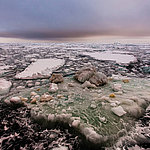
Ice concentration
The ratio (expressed in tenths) of the ice-covered surface to the overall water surface at a given time and in a discrete area.
moreIce core
A cylindrical core of ice retrieved from a glacier or ice sheet.
more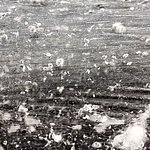
Ice drift
Refers to the motion of sea ice in one main direction.
more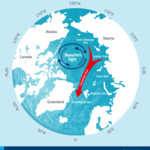
Ice edge
The border between the open ocean and sea ice of any kind, whether fast or drifting, at a given time.
moreIce field
An area filled with drifting ice, consisting of floes of all sizes, and with a diameter of more than 10 km.
moreIce floe
Any comparatively flat piece of sea ice that is at least 20 m wide.
moreIce keel
The part of a pressure ridge that extends below the water’s surface.
moreIce limit
A climatological term that refers to the projected maximum or minimum sea-ice extent in a given month or other timeframe, determined on the basis of years of observation.
moreIce micrographs
Microsections.
more
Ice rind
A brittle, shiny crust of ice.
moreIce sheet
Extensive ice cover on land in the polar regions.
moreIce shelf
An ice shelf is a large, floating sheet of ice with an extensive level or slightly undulating surface, and which is connected to and fed by glaciers, ice flows or ice caps.
more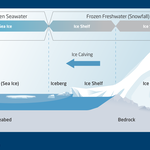
Ice thickness
Thickness of sea ice.
more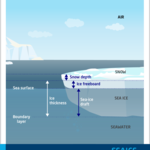
Ice-albedo feedback
A climate feedback concerning changes in the Earth’s albedo.
more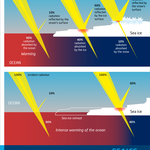
Ice-free
Absence of sea ice.
more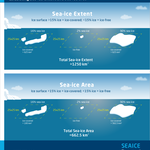
Iceberg
Icebergs are formed when large pieces of ice shelves or glaciers break away or calve and land in the water.
more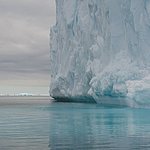
In-situ
In-situ (“in-situation”) means “on site” and refers to readings or observations that are gathered directly on site, without the need for transporting samples or data elsewhere.
moreInconsistencies
Discrepancies between two conditions, where both are considered valid but contradict one another.
moreIndustrial Revolution
A period of rapid industrial growth, with far-reaching social and economic consequences, that began roughly in the year 1750.
moreInland ice
Huge ice masses that can be over 4,000 m thick, cover broad expanses of land, and form at the edges of glacier termini or break off (“calve”) at the ocean’s edge with vertical walls, producing icebergs in the process; today, only to be found in Greenland and the Antarctic.
moreInorganic carbon
Carbon compounds that are not based on carbon-carbon or carbon-hydrogen bonds. Examples of inorganic carbon include carbon dioxide (CO2), carbon monoxide (CO), carbonates and bicarbonates.
moreInterglacial period
In climate history and geology alike, an interglacial period is a phase with higher mean temperatures, located between two periods with lower mean temperatures – ice ages.
moreInterglacial period
A warm phase within an ice age is referred to as an interglacial period.
moreIPCC
Intergovernmental Panel on Climate Change.
moreisostatic
Isostatic refers to a situation in which the forces affecting a given region or object are so balanced that the system as a whole remains in equilibrium. For example, when sea ice grows and its thickness increases, it gradually rises above the water level so as to maintain isostatic equilibrium.
more